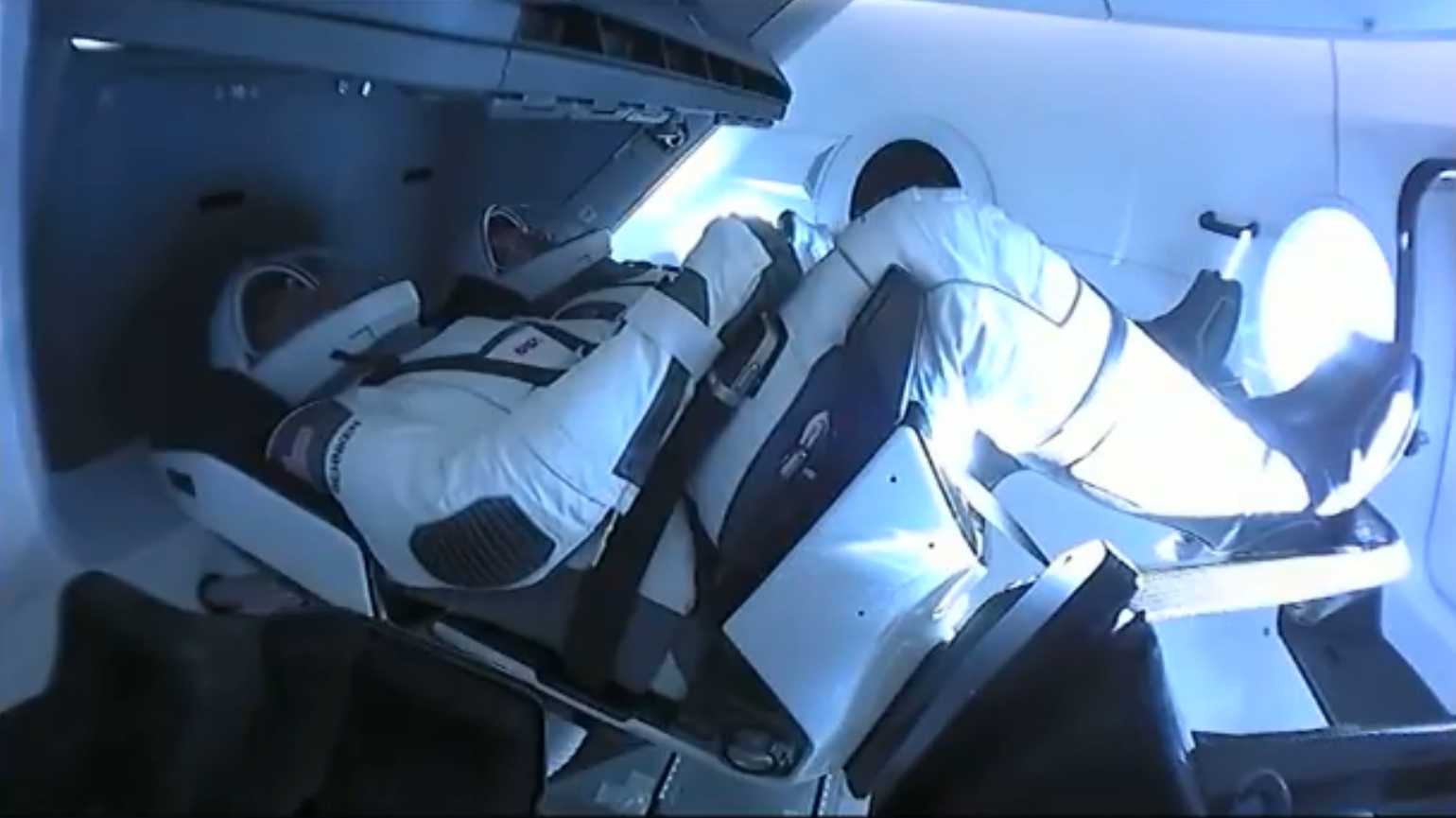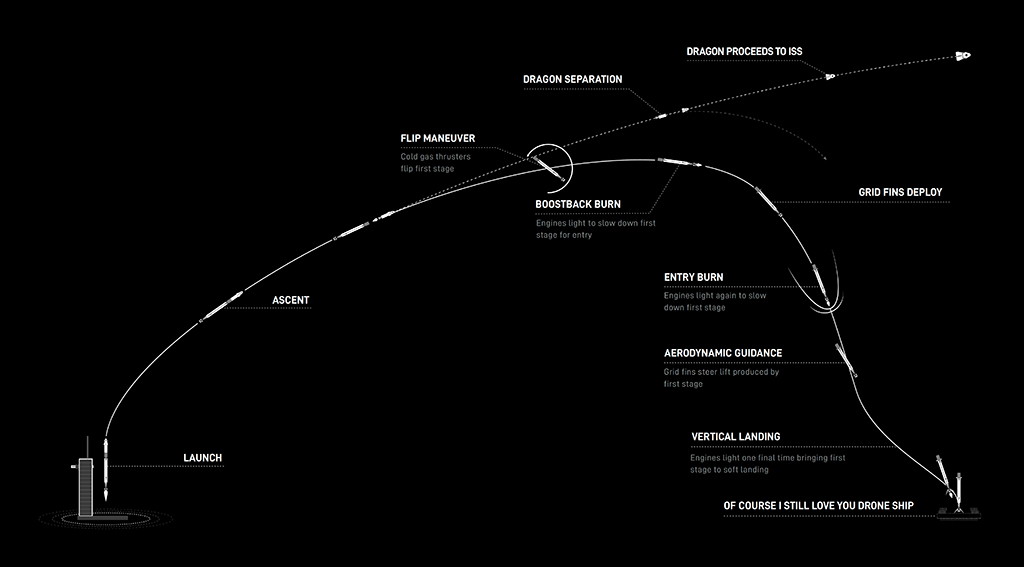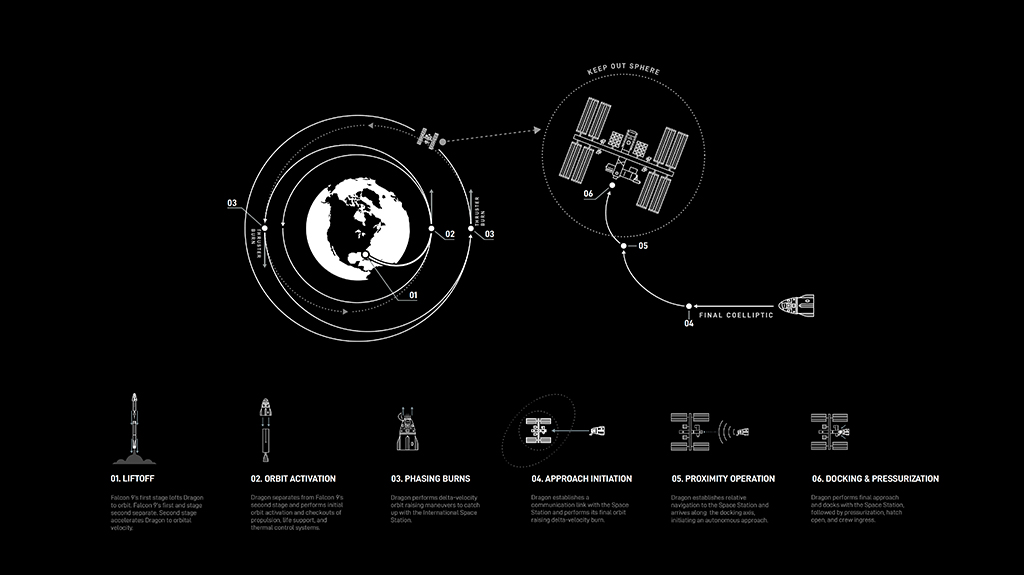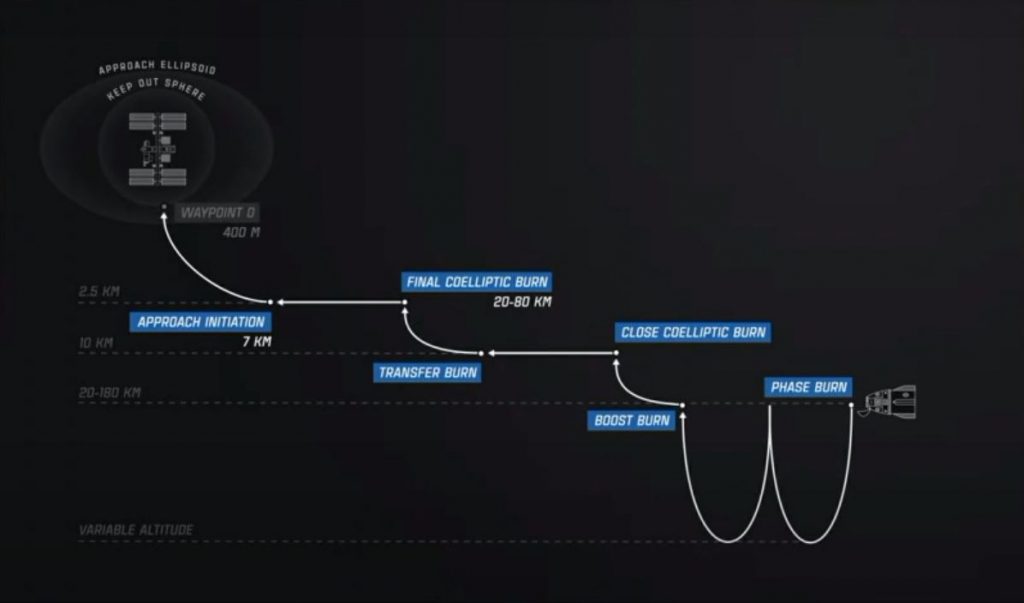

News
SpaceX Crew Dragon astronauts are chasing the space station around Earth
The morning of SpaceX’s most prolific launch – the Crew Dragon Demo-2 mission – began with one question on the mind of many, why did the Falcon 9 rocket have just one second, and one second only, to launch NASA astronauts Bob Behnken and Doug Hurley to the International Space Station (ISS)? A simplified answer is orbital mechanics and a carefully planned out 19 hour trip around the planet.

Richard Angle for Teslarati)
The launch of the Falcon 9 was a highly anticipated moment, however, it was easily the most familiar part of the Demo-2 mission. Leading up to Demo-2, SpaceX had successfully launched twenty-eight Block 5 Falcon 9 boosters – the same type of booster that the Crew Dragon carrying Behnken and Hurley would launch on. The landing of the Falcon 9 on the autonomous spaceport drone ship in the middle of the Atlantic Ocean was also a familiar process that SpaceX had completed successfully a number of times.

Even the Crew Dragon capsule had a launch and mission to the space station under its belt, however, launching astronauts aboard the capsule had yet to be attempted, let alone done successfully. The least familiar part of the mission was what Crew Dragon and its occupants had to achieve once free of the Earth’s gravity well.
Once past launch and separation from the Falcon 9 first stage booster, Crew Dragon would separate from the Falcon 9 second stage, enter an initial orbit, and proceed to spend the next nineteen hours chasing the ISS around the planet. The capsule had to perform a series of burns to lift its orbit high enough to match that of the ISS for autonomous docking nineteen hours later. During the trip, Behnken and Hurley had a series of items to check off prior to initiating their crew sleep aboard Crew Dragon. A few of the items included doffing – or taking off – their SpaceX pressure suits, hosting a brief media opportunity explaining the name “Endeavour” chosen for their capsule as well as the zero-G indicator named “Tremor” chosen to ride along with them and eat their first meal in space.

The Crew Dragon also had a few jobs of its own to complete. Crew and capsule would spend about two hours performing 3 different burns of the sixteen Draco thrusters outfitted all around the Crew Dragon’s outer shell. The first phasing burn was needed to insert it into the correct orbit, followed a little while later by a boost burn to raise the capsule’s orbit even more. And lastly, a close coelliptic burn to flatten out the orbit around the Earth making it more elliptical, rather than circular matching that of the ISS. These three burns were completed while the crew was awake performing any necessary tasks. Two more burns remained to be completed, but those would need to occur much closure to docking with the ISS, one while the crew slept and one just before autonomous docking procedures were set to begin.

The fourth burn – a transfer burn – is intended to raise the capsule the final ten meters in orbital space to match that of the ISS. This burn will allow the capsule to begin its final approach toward the station. It will be completed by the SpaceX mission control ground station in Hawthorne, California while the crew sleeps. It will be a gentle burn of the Dracos lasting less than a minute.
The capsule will then burn the Draco thrusters once more for the final coelliptic burn matching its orbit directly with the ISS. At this time, the crew aboard both the Crew Dragon capsule and space station will be awake for a full day of work including the meticulous process of autonomously docking the capsule to the ISS, the opening of the hatch of Crew Dragon, and welcoming Behnken and Hurley aboard the station as members of the Expedition 63 crew.
Crew Dragon is expected to meet up with the ISS nineteen hours after liftoff. Docking with the station is set to occur on Sunday, May 31st around 10:30 am EDT/14:30 UTC. Behnken and Hurley will be welcomed aboard the station during a traditional crew welcoming ceremony that should occur about two hours after docking has been confirmed.
Check out Teslarati’s newsletters for prompt updates, on-the-ground perspectives, and unique glimpses of SpaceX’s rocket launch and recovery processes.

Elon Musk
Elon Musk and Tesla AI Director share insights after empty driver seat Robotaxi rides
The executives’ unoccupied tests hint at the rapid progress of Tesla’s unsupervised Robotaxi efforts.

Tesla CEO Elon Musk and AI Director Ashok Elluswamy celebrated Christmas Eve by sharing personal experiences with Robotaxi vehicles that had no safety monitor or occupant in the driver’s seat. Musk described the system’s “perfect driving” around Austin, while Elluswamy posted video from the back seat, calling it “an amazing experience.”
The executives’ unoccupied tests hint at the rapid progress of Tesla’s unsupervised Robotaxi efforts.
Elon and Ashok’s firsthand Robotaxi insights
Prior to Musk and the Tesla AI Director’s posts, sightings of unmanned Teslas navigating public roads were widely shared on social media. One such vehicle was spotted in Austin, Texas, which Elon Musk acknowleged by stating that “Testing is underway with no occupants in the car.”
Based on his Christmas Eve post, Musk seemed to have tested an unmanned Tesla himself. “A Tesla with no safety monitor in the car and me sitting in the passenger seat took me all around Austin on Sunday with perfect driving,” Musk wrote in his post.
Elluswamy responded with a 2-minute video showing himself in the rear of an unmanned Tesla. The video featured the vehicle’s empty front seats, as well as its smooth handling through real-world traffic. He captioned his video with the words, “It’s an amazing experience!”
Towards Unsupervised operations
During an xAI Hackathon earlier this month, Elon Musk mentioned that Tesla owed be removing Safety Monitors from its Robotaxis in Austin in just three weeks. “Unsupervised is pretty much solved at this point. So there will be Tesla Robotaxis operating in Austin with no one in them. Not even anyone in the passenger seat in about three weeks,” he said. Musk echoed similar estimates at the 2025 Annual Shareholder Meeting and the Q3 2025 earnings call.
Considering the insights that were posted Musk and Elluswamy, it does appear that Tesla is working hard towards operating its Robotaxis with no safety monitors. This is quite impressive considering that the service was launched just earlier this year.
Elon Musk
Starlink passes 9 million active customers just weeks after hitting 8 million
The milestone highlights the accelerating growth of Starlink, which has now been adding over 20,000 new users per day.

SpaceX’s Starlink satellite internet service has continued its rapid global expansion, surpassing 9 million active customers just weeks after crossing the 8 million mark.
The milestone highlights the accelerating growth of Starlink, which has now been adding over 20,000 new users per day.
9 million customers
In a post on X, SpaceX stated that Starlink now serves over 9 million active users across 155 countries, territories, and markets. The company reached 8 million customers in early November, meaning it added roughly 1 million subscribers in under seven weeks, or about 21,275 new users on average per day.
“Starlink is connecting more than 9M active customers with high-speed internet across 155 countries, territories, and many other markets,” Starlink wrote in a post on its official X account. SpaceX President Gwynne Shotwell also celebrated the milestone on X. “A huge thank you to all of our customers and congrats to the Starlink team for such an incredible product,” she wrote.
That growth rate reflects both rising demand for broadband in underserved regions and Starlink’s expanding satellite constellation, which now includes more than 9,000 low-Earth-orbit satellites designed to deliver high-speed, low-latency internet worldwide.
Starlink’s momentum
Starlink’s momentum has been building up. SpaceX reported 4.6 million Starlink customers in December 2024, followed by 7 million by August 2025, and 8 million customers in November. Independent data also suggests Starlink usage is rising sharply, with Cloudflare reporting that global web traffic from Starlink users more than doubled in 2025, as noted in an Insider report.
Starlink’s momentum is increasingly tied to SpaceX’s broader financial outlook. Elon Musk has said the satellite network is “by far” the company’s largest revenue driver, and reports suggest SpaceX may be positioning itself for an initial public offering as soon as next year, with valuations estimated as high as $1.5 trillion. Musk has also suggested in the past that Starlink could have its own IPO in the future.
News
NVIDIA Director of Robotics: Tesla FSD v14 is the first AI to pass the “Physical Turing Test”
After testing FSD v14, Fan stated that his experience with FSD felt magical at first, but it soon started to feel like a routine.

NVIDIA Director of Robotics Jim Fan has praised Tesla’s Full Self-Driving (Supervised) v14 as the first AI to pass what he described as a “Physical Turing Test.”
After testing FSD v14, Fan stated that his experience with FSD felt magical at first, but it soon started to feel like a routine. And just like smartphones today, removing it now would “actively hurt.”
Jim Fan’s hands-on FSD v14 impressions
Fan, a leading researcher in embodied AI who is currently solving Physical AI at NVIDIA and spearheading the company’s Project GR00T initiative, noted that he actually was late to the Tesla game. He was, however, one of the first to try out FSD v14.
“I was very late to own a Tesla but among the earliest to try out FSD v14. It’s perhaps the first time I experience an AI that passes the Physical Turing Test: after a long day at work, you press a button, lay back, and couldn’t tell if a neural net or a human drove you home,” Fan wrote in a post on X.
Fan added: “Despite knowing exactly how robot learning works, I still find it magical watching the steering wheel turn by itself. First it feels surreal, next it becomes routine. Then, like the smartphone, taking it away actively hurts. This is how humanity gets rewired and glued to god-like technologies.”
The Physical Turing Test
The original Turing Test was conceived by Alan Turing in 1950, and it was aimed at determining if a machine could exhibit behavior that is equivalent to or indistinguishable from a human. By focusing on text-based conversations, the original Turing Test set a high bar for natural language processing and machine learning.
This test has been passed by today’s large language models. However, the capability to converse in a humanlike manner is a completely different challenge from performing real-world problem-solving or physical interactions. Thus, Fan introduced the Physical Turing Test, which challenges AI systems to demonstrate intelligence through physical actions.
Based on Fan’s comments, Tesla has demonstrated these intelligent physical actions with FSD v14. Elon Musk agreed with the NVIDIA executive, stating in a post on X that with FSD v14, “you can sense the sentience maturing.” Musk also praised Tesla AI, calling it the best “real-world AI” today.








